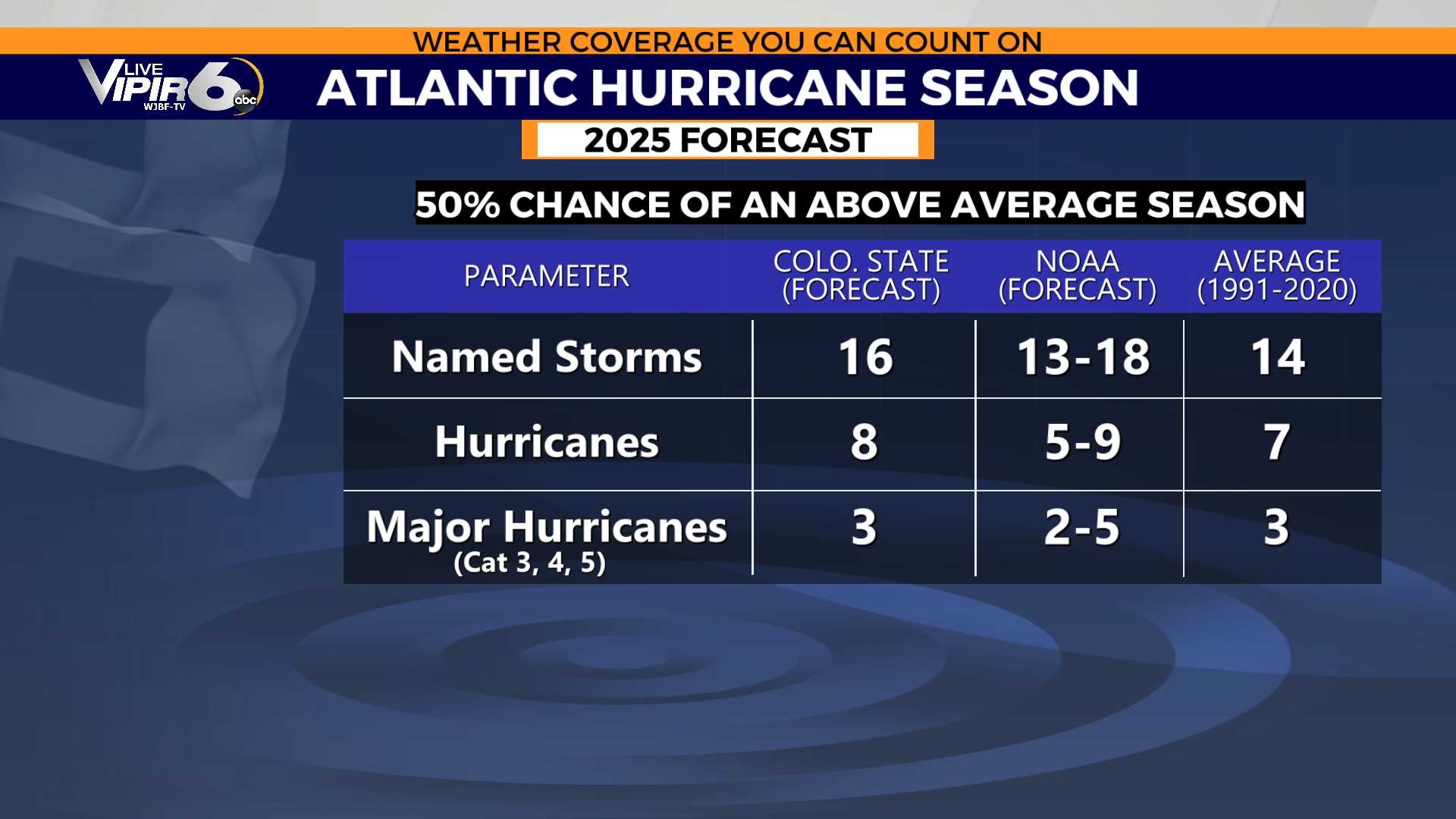News
NOAA Predicts Active 2025 Hurricane Season Amid Tropical Developments

ORLANDO, Fla. — The National Oceanic and Atmospheric Administration (NOAA) released its mid-season update for the 2025 Atlantic Hurricane Season on August 7, maintaining an above-average outlook while slightly lowering its storm count.
According to NOAA, there are now predictions for 13 to 18 named storms for the current season, which runs from June 1 through November 30. This includes five to nine hurricanes, with two to five possibly becoming major hurricanes with sustained winds of at least 111 mph.
This update follows a previous forecast that also indicated a highly active season. The chance of an above-average season is now set at 50%, down from 60%. However, it’s important to note that this outlook is not specific to Florida.
Currently, there are three areas being monitored in the tropics. Meteorologist Jim Weber from FOX 13 reports that Dexter is now a post-tropical system and is moving out to sea. Another area off the east coast is being watched for potential development into a sub-tropical system.
Forecasters are also watching Invest 96L, which currently has a 60% chance of developing over the next week. Additionally, a tropical wave over the Bahamas is expected to increase rain chances in Florida over the coming days.
No hurricane has yet developed this season, but forecasters are alerting communities to prepare for what could be an active period as the Atlantic reaches its peak storm activity around September 10.
The atmospheric conditions, including warmer-than-average sea surface temperatures and weak wind shear, are favorable for storm development. NOAA’s National Weather Service Director Ken Graham emphasized the importance of preparedness. “This outlook is a call to action: be prepared. Take proactive steps now to make a plan and gather supplies to ensure you’re ready before a storm threatens,” said Graham.
As of now, four named storms have already been recorded this season, with Tropical Storm Chantal making landfall in South Carolina on July 6, bringing high winds and heavy rainfall.












